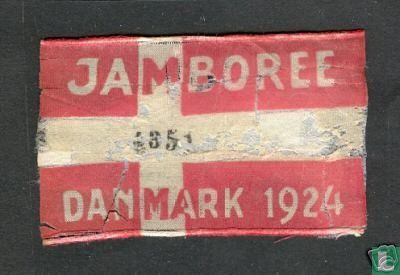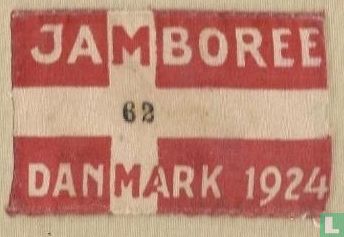


Agrandissement
Participants badge 2nd World Jamboree



Descriptif de l'objet
Numéro LastDodo
3143859
Catégorie
Badges
Titre
Participants badge 2nd World Jamboree
Rubrique
Sous-rubrique
Type d'activité
2nd World Jamboree
Partie / âge
Société / organisation
Collection
2nd World Jamboree
Numéro dans la collection
Année
1924
Pays d'origine
Ville
Ermelunden
Langue
Forme
Matière
Couleur de fond
Couleur du texte
Verso
Tranche
Couleur de tranche
Structure
Thème
Personne
Dessinateur
Dimensions
6,5 x 4,0 x cm
Particularités
Silk, Danish flag, numbered
One per participant, used as identification, a.k.a. Jamboree mark
1924 WORLD JAMBOREE BADGES
Among the oldest and scarest Scouting memorabilia items are the participant badges of the 1924 World Jamboree. These badges are unique for several reasons. Although the first World Jamboree was held in 1920 tn London no participant badge or patch was
isued. Thus, the 1924 World Jamboree badge is the first World Jamboree participant patch issued and the first international Scouting activity patch. Each patch was cut from a roll and numbered by the Camp Chiefs secretary using a hand stamp. They were numbered because they were used as the oficial pass on site The official souvenir book, “Jamboree. Denmark, 1924", listed a total of 4.731 participants making it the Jamboree with the smallest attendance. Badges were also known to have been issued to special guests, vendors and suppliers on site. Approxamately 5,200 total badges are believed to have been issued.
The badge: were printed on ‘weighted" silk. “Weighted” was the term for silk treated with metallic salts that gave the silk a heavier feel, sheen and rustle. Unfortunately the process also caused the silk fibers to break down faster. The process was developed in the late 1800's and banned from use in the early 1930‘s.
Without proper conservation by a qualified textile conservator the badges are so fragile that even alight handling can cause the silk fibers to “shatter”. Some badges were glued to paper in an effort to stop the deterioration. Unfortunately, the chemicals in the glue
and the acid in the paper caused further damage. Light can also fade the badges.
Because of their age and fragile nature very few of the badges exist today. It is believed that fewer than I00 have survived. A few are owned by musea. Others exist in private collections.





